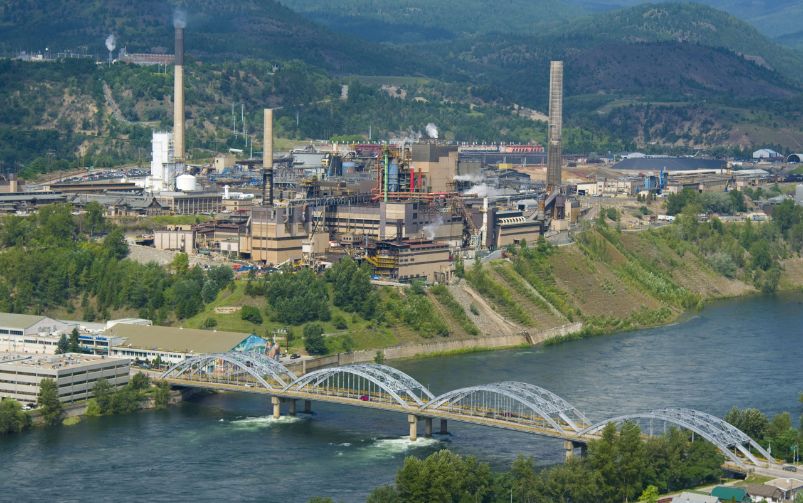BHP’s Jansen mine east of Saskatoon is expected to supply 10 per cent of the world’s potash demand by the early 2030s. Courtesy of BHP.
Welcome back to your weekly mining news recap, where we catch you up on some of the news you may have missed. This week’s headlines include the Minto mine getting a new lease on life, copper prices reaching a three-month high and Blue Lagoon advancing its Dome Mountain gold project.
Canadian natural resources company Venerable Ventures and Selkirk First Nation plan to form Selkirk Copper Mines and acquire the idle Minto copper and gold mine in Yukon, Mining Weekly reported Tuesday. The $15 million, all-share deal will make Selkirk the largest shareholder of the company. The Minto mine, active from 2007 to 2023, was placed in receivership last year. The First Nation took ownership of the mine site in June after court proceedings and discussions with the Yukon government. Engineering studies and a resource update for the mine are being carried out.
B2Gold said Wednesday it had poured first gold at its Goose open pit and underground project in Nunavut. The mill began processing ore on June 24 and is currently operating at about 50 per cent nameplate capacity, with commercial production expected in the third quarter of this year. B2Gold anticipates the project will produce between 120,000 to 150,000 ounces of gold this year and about 300,000 ounces annually from 2026 to 2031.
Aluminerie Alouette is planning to spend up to $1.5 billion to modernize its smelter in Sept-Îles, Quebec, Bloomberg reported Wednesday. The firm, which is owned by a consortium with Rio Tinto as the largest shareholder, has reportedly secured a new electricity supply deal with Hydro-Québec. The smelter currently employs about 900 people and has an annual capacity of 630,000 tonnes of primary aluminum.
Ottawa is moving ahead with a $4.4-billion plan to freeze 237,000 tonnes of arsenic trioxide dust under the former Giant gold mine in Yellowknife for 100 years despite local efforts for a permanent solution, The Northern Miner reported. While officials call this the safest option, locals and the Giant Mine Oversight Board (GMOB), an independent watchdog, say it isn’t a truly permanent solution given expected permafrost thaw, and are arguing for permanent removal and treatment. The GMOB is pursuing a lasting solution but said it could take roughly 25 years to develop, despite ongoing research and community concerns.
BHP is now more than 60 per cent done constructing the first stage of its $14 billion Jansen potash project in Saskatchewan, with production expected to begin in late 2026, The Northern Miner reported. Jansen will be one of the world’s largest potash mines by the early 2030s, supplying around 8.5 million tonnes, or 10 per cent of global demand. BHP is targeting first production on Jansen’s second stage in 2029, and a presentation by the company said the project has the potential for two further expansions that could boost production to 17 million tonnes per year.
Copper prices reached a three-month high on Tuesday, to US$9,960 per tonne, thanks to tighter supply on the London Metal Exchange (LME) and investor optimism about improved U.S.-China relations, Mining.com reported. LME stores of copper have dropped a precipitous 65 per cent this year while Chicago Mercantile Exchange warehouse holdings more than doubled as traders sought to beat tariffs proposed by the White House. Recent U.S.-China trade talks have helped to drive the copper price even higher. Goldman Sachs said in a note it anticipates LME prices could hit roughly US$10,050 per tonne in August.
Blue Lagoon Resources said Monday it’s making “significant progress” towards bringing its Dome Mountain gold project east of Smithers, B.C. into production in the third quarter. The company reported it had recently completed a non-brokered financing round and also signed a $2-million line of credit that president and chief executive officer Rana Vig said in a press release “gives us the flexibility to fund mining and development without delay.” The underground mine project also passed government electrical, reclamation and geoscience, and ground control and health and safety inspections, and has completed the construction of and partly commissioned its water treatment plant. Dome Mountain’s permit allows the company to mine an initial 55,000 tonnes per year.
The Canadian Ombudsperson for Responsible Enterprise (CORE), a federal office created in 2019 to investigate abuses by Canadian mining, oil and garment sector companies operating abroad, has been without a permanent leader for more than a year and the office’s future is currently under review, the Globe and Mail reported Wednesday. The office was never given investigatory powers to compel testimony or documents, as the government had initially promised; in its first four years it hadn’t completed any investigations.
That’s all for this week. If you’ve got feedback, you can always reach us at editor@cim.org. If you’ve got something to add, why not join the conversation on our Facebook, Twitter, LinkedIn or Instagram pages?




